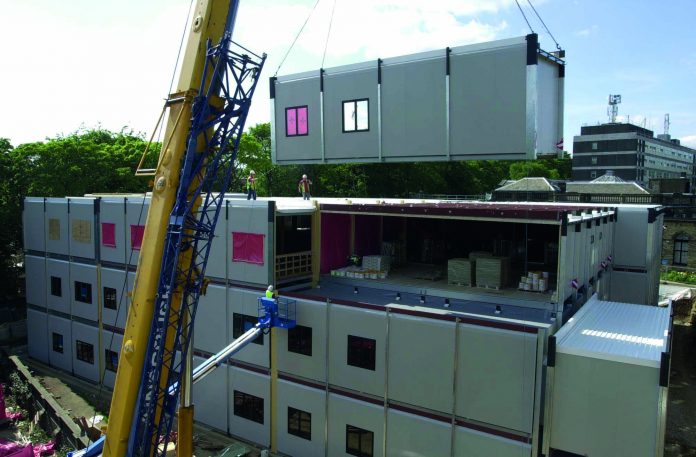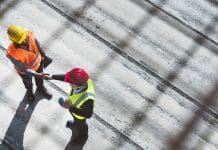Richard Hipkiss, development director of the Modular & Portable Building Association, looks at the journey of volumetric modular technology
Construction is a complex business. Recently volumetric modular technology has rightly been hailed as the solution to the productivity and quality issues that have plagued the industry for decades. But despite common misconceptions, modular construction is not a new concept.
It is hard to believe but the MPBA was founded in 1938, way ahead of the thinking at the time. The end of World War One saw the UK construction industry shaken by major shortages of skilled labour and building materials the result was an acute lack of housing. So, the times and the technology may have changed but the issues certainly have not.
The lack of housing stimulated a search for new methods of construction to alleviate the problem. The emphasis was to supplement traditional building operations with new methods of construction using industrial factory capacity outside the building industry – sounds familiar!
We are now far removed from the stigma associated with the “prefabs” of yesteryear. More recently, we have welcomed newcomers to our industry – some have been remarkably successful, and some have not. But it is worth noting that behind the headlines sit industry stalwarts who, in the case of Wernick Group, have been around since 1934. It was not long before other leading brands that are still major players in the volumetric modular and portable building space today joined the ranks, with the foundation of Portakabin in 1961, which was quickly followed by Elliott Group (Algeco) in 1963, Pickerings in 1969 and Thurston Group in 1970.
So how have these companies stood the test of time?
There is not one simple answer. But in the main, it is down to staying relevant and current. Listening, learning and developing technical solutions to overcome inherent industry issues while also having a keen eye on the future and anticipating what is coming down the track.
Volumetric modular technology reduced build times & increases quality, productivity and safety
Without doubt volumetric modular technology provides a rapid and agile solution but this is simply not enough in the current climate. Construction projects now have many key drivers, some mandatory such as building regulations and others, although not embedded in legislation, are considered equally essential.
Predictability in a world dogged by uncertainty is a big thing. Assurances around safety, performance and building schedules alleviate a lot of headaches for specifiers and project managers. Although not presently making headlines, we cannot overlook the sustainability gains achieved through volumetric approaches.
Since the government amended the Climate Change Act in 2019 to commit the UK to achieving net zero carbon emissions by 2050, the construction industry has been confronted with the need to decarbonise. While there has been a drive to reduce in-use operational emissions through the implementation of government legislation, such as the changes to Part L of Building Regulations to improve the building fabric – little has been done to address the carbon inefficiencies in the construction process.
It is now established that volumetric modular approaches are a game-changer for the construction industry – reducing build times by an impressive 50%-60% while increasing quality, productivity and safety. But what is not so widely understood is that when compared with traditionally built projects, it is easier to control energy use in factory settings rather than open construction sites. On average, 67% less energy is required to produce a volumetric manufactured building and up to 50% less time is spent onsite, resulting in up to 90% fewer vehicle movements, which is less disruptive for the local community and reduces carbon emissions. The modular way also limits the amount of concrete in the ground and eco-friendly materials are often specified, tailoring every inch of a volumetric modular build.
Volumetric modular buildings are less susceptible to poorly specified manufacturers’ products as time can be taken upfront to validate the correct specification of materials. Designs are digitally constructed and virtually tested before they move on to the manufacturing phase. This process eliminates waste and achieves highly accurate and airtight building envelopes designed and built to higher sustainability requirements, such as BREEAM standards.
Unlike factory-manufactured buildings, there is significant evidence that traditional construction methods do not produce buildings that perform as well as design expectations and there is a void between anticipated and actual in-use performance. Findings from studies such as PROBE (Post-Occupancy Review of Buildings and their Engineering) reveal that actual energy consumption in buildings is often as much as twice of that predicted at the design stage.
So, since our inception in 1938, our association and the industry we serve has made gargantuan steps to transform the way volumetric manufactured buildings are designed and delivered. It is testament to our founding members that they have not only stood the test of time but are still at the forefront of industry innovations. The benefits of volumetric manufactured buildings begin in the factory, continue on the construction site and last throughout the lifetime of the building.
Richard Hipkiss
Development director
Modular & Portable Buildings Association
Tel: +44 (0)2475 90 1938

















